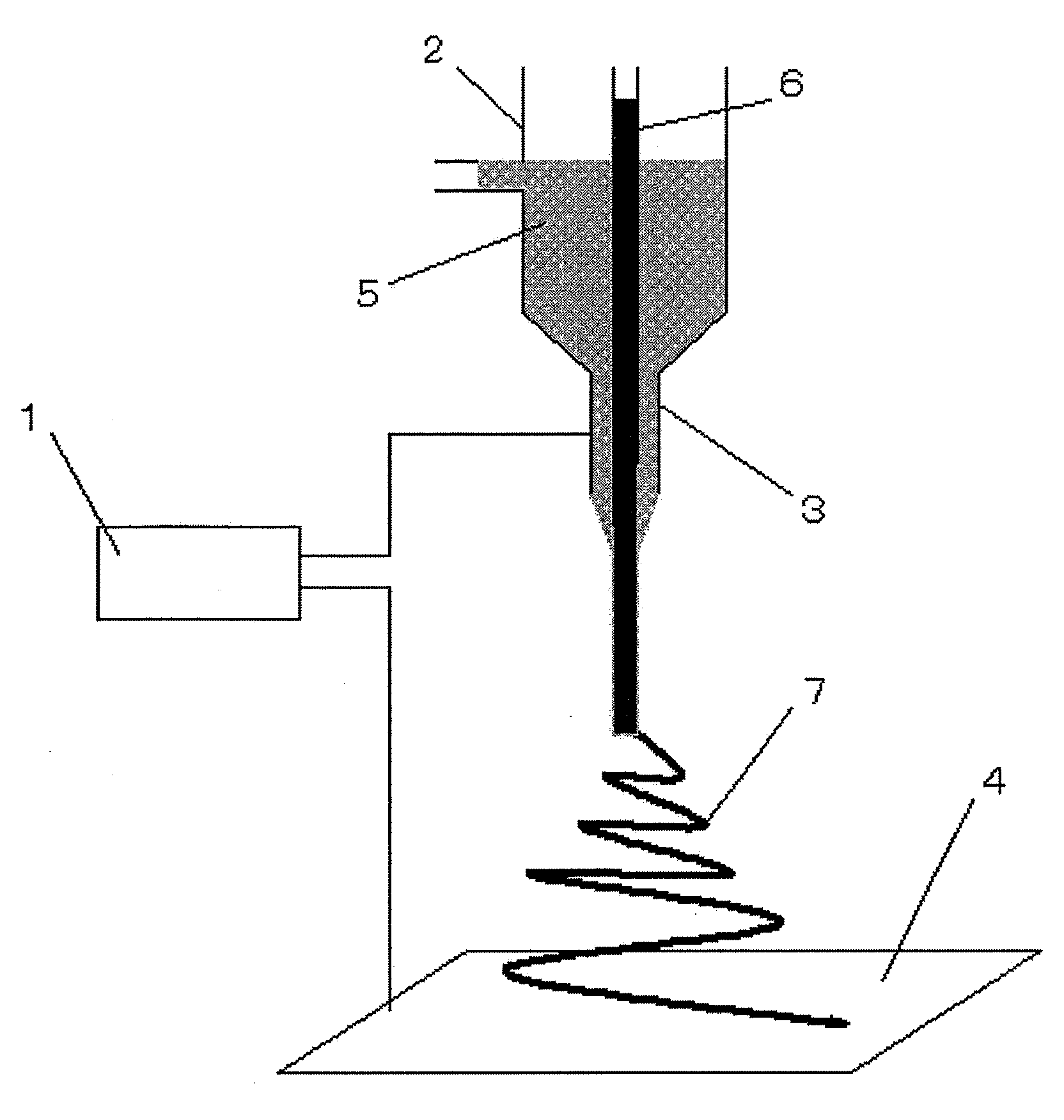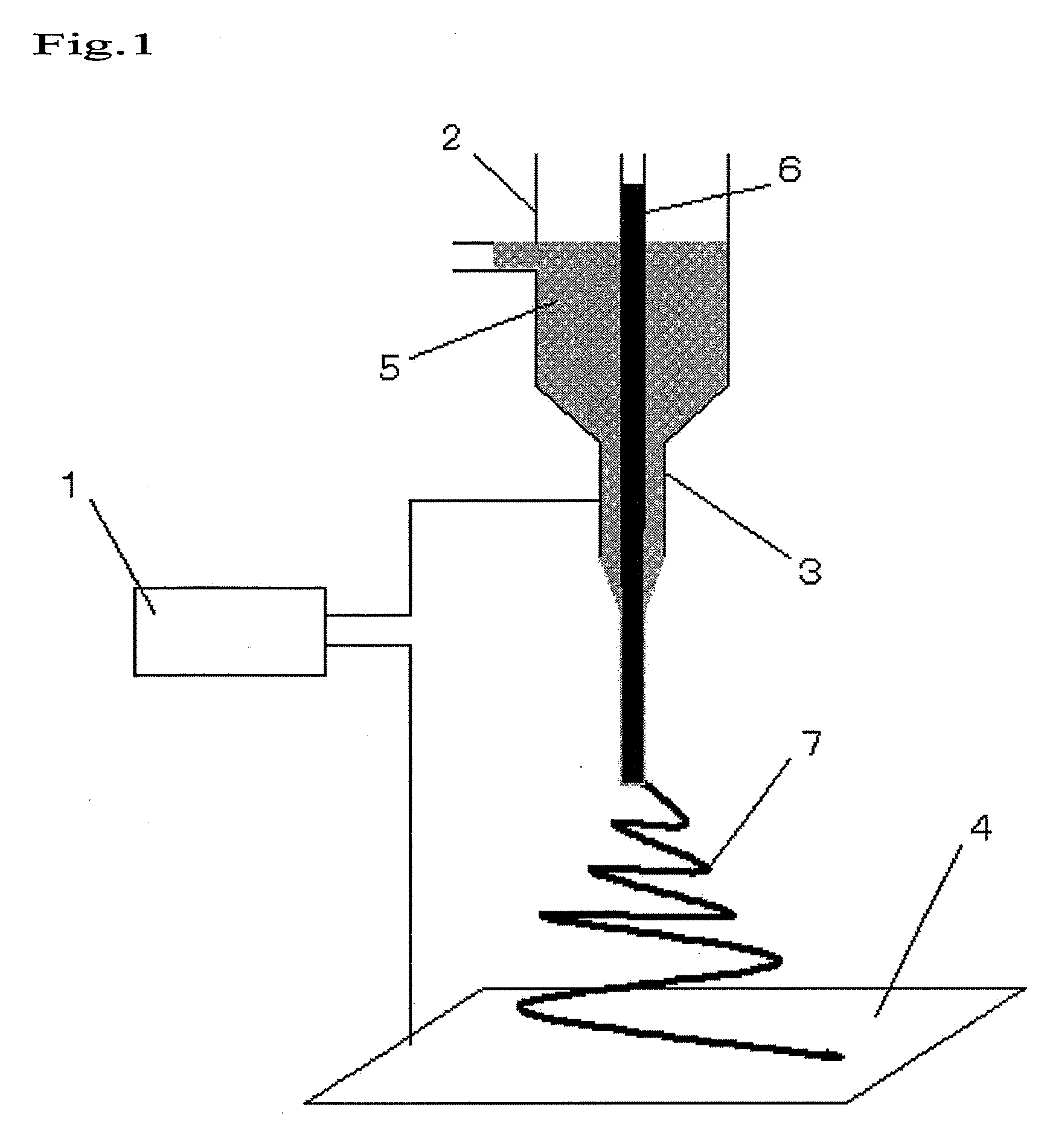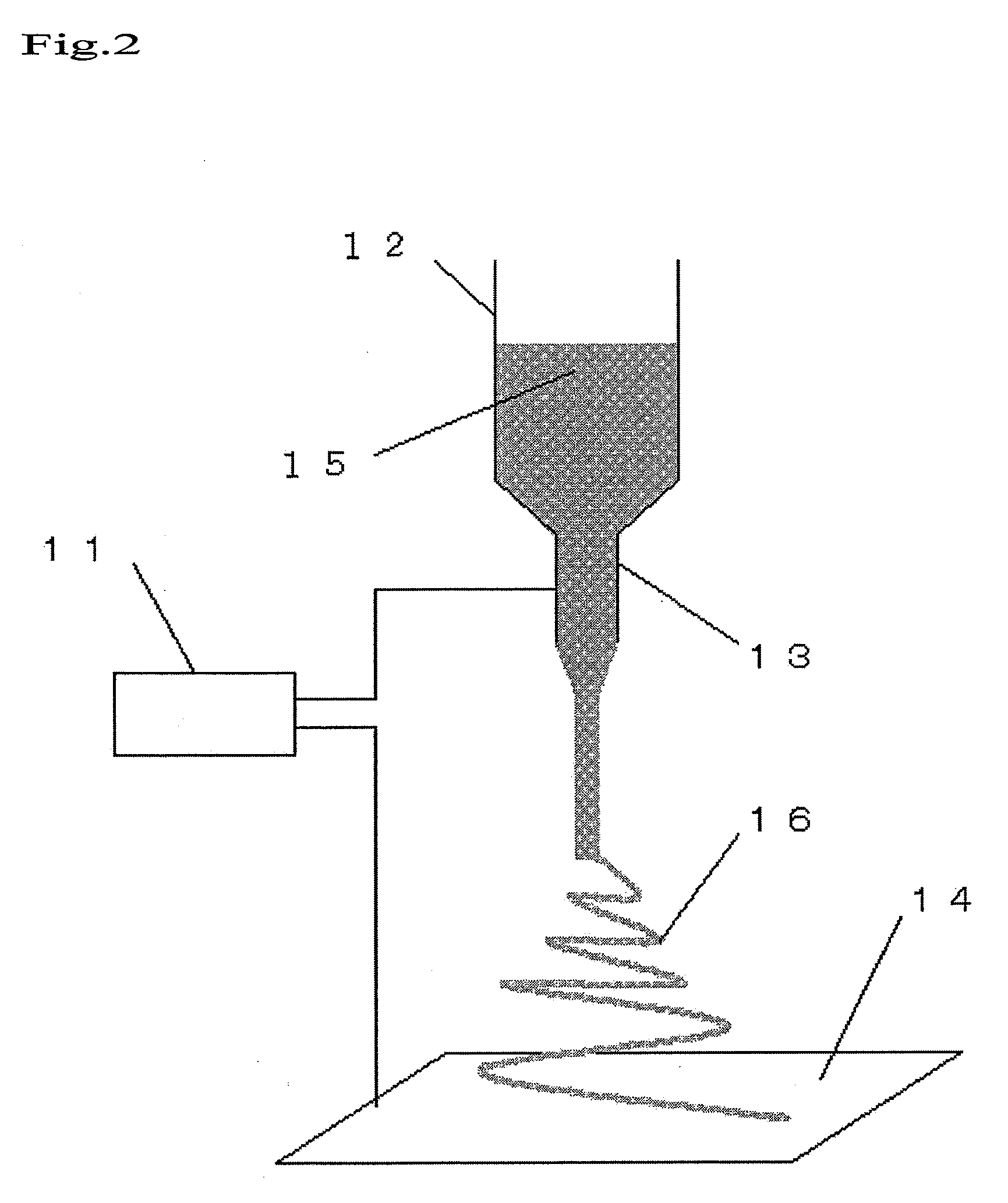Hazardous substance removing material, method for removing hazardous substances, and nonwoven fabric
a technology for hazardous substances and nonwoven fabrics, which is applied in the direction of filtration separation, separation processes, instruments, etc., can solve the problems of lowering the removal efficiency, and achieve the effects of high efficiency, sufficient mechanical strength and sufficient fiber strength
- Summary
- Abstract
- Description
- Claims
- Application Information
AI Technical Summary
Benefits of technology
Problems solved by technology
Method used
Image
Examples
example 1
[0056]A 10% (w / w) trifluoroacetic acid solution of polyethylene terephthalate and a 10% (w / w) tetrahydrofuran solution of ethyl cellulose were prepared. A nanofiber nonwoven fabric was produced using the apparatus of FIG. 1. With an arrangement where polyethylene terephthalate was for the core and ethyl cellulose was for the sheath, the electrospinning was carried out at a syringe feed rate of 0.01 to 0.1 mm / min with an applied voltage of 10 to 20 kV. The production was performed so that the ratio of the core to the sheath was polyethylene terephthalate:ethyl cellulose=60:40, by mass ratio. The resultant product was dried in vacuum at 80° C. for 8 hours to thereby obtain a nonwoven fabric N-1 having a thickness of 85 μm. The average fiber diameter was measured by SEM, which showed 85 nm.
example 2
[0057]A nanofiber nonwoven fabric was produced in the same manner as that of example 1, except for that a 10% (w / w) tetrahydrofuran solution of polycarbonate was used instead of the trifluoroacetic acid solution of polyethylene terephthalate. The production was performed so that the ratio of the core to the sheath was polycarbonate ethyl cellulose=75:25, by mass ratio. The resultant product was dried in vacuum at 80° C. for 8 hours to thereby obtain a nonwoven fabric N-2 having a thickness of 75 μm. The average fiber diameter was measured by SEM, which showed 90 nm.
example 3
[0058]A nanofiber nonwoven fabric was produced in the same manner as that of example 1, except for that a 5% (w / w) N-methylmorpholine-N-oxide solution of cellulose was used instead of the tetrahydrofuran solution of ethyl cellulose. The production was performed so that the ratio of the core to the sheath was polyethylene terephthalate:cellulose=80:20, by mass ratio. The resultant product was dried in vacuum at 80° C. for 8 hours to thereby obtain a nonwoven fabric N-3 having a thickness of 80 μm. The average fiber diameter was measured by SEM, which showed 80 nm.
PUM
| Property | Measurement | Unit |
|---|---|---|
| Diameter | aaaaa | aaaaa |
| Fraction | aaaaa | aaaaa |
| Elastic modulus | aaaaa | aaaaa |
Abstract
Description
Claims
Application Information
 Login to View More
Login to View More - R&D
- Intellectual Property
- Life Sciences
- Materials
- Tech Scout
- Unparalleled Data Quality
- Higher Quality Content
- 60% Fewer Hallucinations
Browse by: Latest US Patents, China's latest patents, Technical Efficacy Thesaurus, Application Domain, Technology Topic, Popular Technical Reports.
© 2025 PatSnap. All rights reserved.Legal|Privacy policy|Modern Slavery Act Transparency Statement|Sitemap|About US| Contact US: help@patsnap.com



